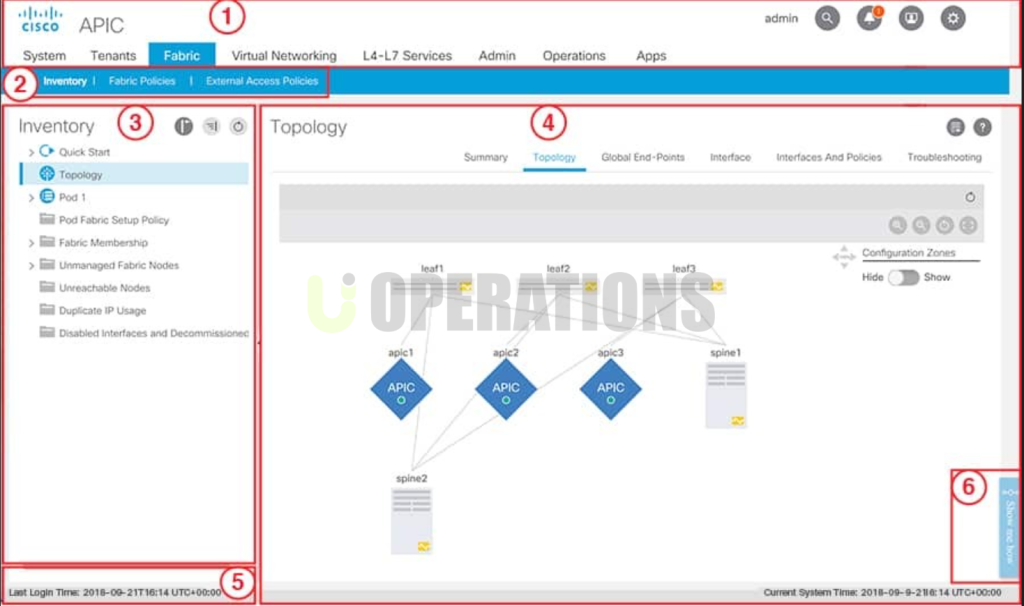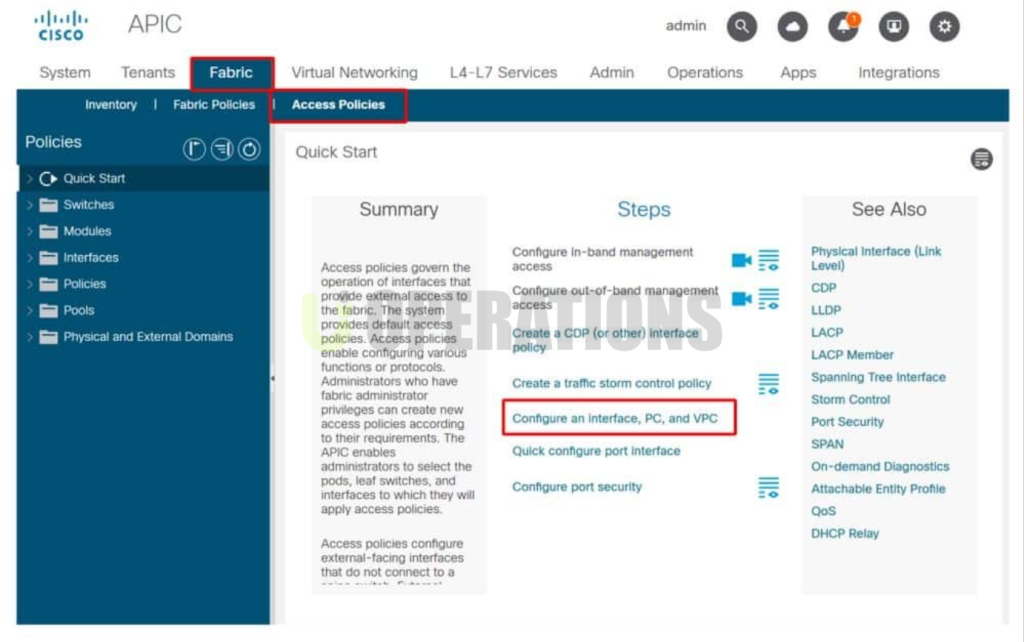Portfolio Details
Cisco ACI deployment
Price: 1600$
Duration: 2 weeks
01
Introduction
This document provides a comprehensive overview of the Cisco ACI (Application Centric Infrastructure) deploymen. The deployment was executed to address the client’s specific network needs, optimize their data center infrastructure, and improve the agility and scalability of their applications. Cisco ACI was selected for its ability to provide automated, policy-driven network management and its integration with a broad range of data center technologies.
02
Client Requirements
The client had several key requirements that drove the decision to implement Cisco ACI:
- Simplified Data Center Management:
The client required a more streamlined way to manage and scale their data center network. The existing infrastructure was complex, requiring manual configurations and causing operational inefficiencies. A policy-driven approach was needed for better automation. - Application-Centric Network:
The client wanted a network infrastructure that could align closely with their applications’ needs, ensuring optimized performance and seamless deployment of new services and applications. Cisco ACI’s application-centric design was a perfect fit for this requirement. - Improved Scalability and Flexibility:
As the client’s data center capacity and workloads were increasing, they required a network solution that could easily scale both horizontally and vertically to meet future demands without complex manual reconfigurations. - Enhanced Security and Segmentation:
The client emphasized the need for stronger network segmentation and improved security posture within their data center. They required better micro-segmentation to isolate traffic between applications, departments, and users to minimize the risk of potential security breaches. - Automation and Integration with Existing Tools:
The client wanted to automate network provisioning and integrate Cisco ACI with their existing infrastructure management and orchestration tools, including VMware and OpenStack, for a seamless operational workflow. - Centralized Network Control and Monitoring:
The client needed a centralized system for network management and monitoring to gain full visibility into their network’s performance, health, and security posture, with real-time insights for proactive troubleshooting.
- Simplified Data Center Management:
03
Solution Overview
To address the client’s network requirements, a comprehensive Cisco ACI solution was implemented. Cisco ACI is a holistic solution that integrates both hardware and software to deliver a policy-driven approach to data center networking. The solution involved:
- Cisco ACI Fabric:
The core of the solution was the deployment of Cisco ACI fabric, which consists of Application Policy Infrastructure Controllers (APICs) and Cisco Nexus 9000 Series switches. This fabric enables automated and policy-based management of network resources across the entire data center. - Cisco Nexus 9000 Series Switches:
These switches were deployed to form the spine and leaf topology in the ACI fabric. The Nexus 9000 switches provide high-performance, low-latency networking, and were critical for ensuring seamless connectivity and scalability within the data center environment. - Cisco Application Policy Infrastructure Controller (APIC):
APIC acts as the central controller in the ACI deployment, providing policy-driven automation and centralized network management. It was configured to define and enforce network policies based on the client’s application needs, ensuring that resources are dynamically allocated and optimized. - ACI Multi-Site Deployment:
The client required a multi-site ACI deployment to support their geographically distributed data centers. Cisco ACI’s Multi-Site feature enables the centralized management of multiple data centers, providing consistent policy enforcement across locations and optimizing traffic routing. - Integration with Virtualization and Cloud Environments:
The ACI solution was integrated with VMware vSphere and OpenStack environments to automate the provisioning of virtual machines and workloads. This integration allowed the client to leverage their existing virtualized environment while also taking advantage of ACI’s policy-driven automation. - Micro-Segmentation and Security Policies:
Cisco ACI’s micro-segmentation capabilities were implemented to create fine-grained security policies that control east-west traffic between applications and workloads. This significantly enhanced security by isolating different segments of the network and providing better control over application traffic.
- Cisco ACI Fabric:
04
Deployment process
The deployment of Cisco ACI for the client was carried out in the following phases:
- Assessment and Planning:
The project began with a thorough assessment of the client’s existing network infrastructure. During this phase, we identified pain points, requirements for scalability, and areas for improvement. A detailed design was developed that aligned with the client’s business goals and technical needs. - Solution Design and Configuration:
Based on the assessment, we designed the ACI architecture, including the physical topology, APIC configuration, and integration with the existing virtualized environments. The ACI fabric was configured to support the client’s application requirements and optimized for high performance and availability. - Hardware Installation and Setup:
The deployment included the physical installation of Cisco Nexus 9000 switches, along with the setup of the ACI fabric. The switches were configured in a spine-leaf topology, ensuring optimal traffic flow, redundancy, and scalability. - APIC Configuration and Policy Definition:
APIC controllers were configured to define application profiles, endpoint groups (EPGs), and network policies based on the client’s requirements. Policies were established for network traffic, security, and automation, aligning with application performance and security needs. - Integration and Testing:
Once the hardware was in place and the policies were defined, integration with the client’s existing virtualization platforms and cloud services was carried out. The deployment was tested to ensure that all systems were communicating effectively, and that the application-centric policies were being enforced as expected. - Go-Live and Monitoring:
After successful testing, the solution went live. We provided comprehensive monitoring tools to ensure the smooth operation of the ACI fabric and proactively identified any potential performance or security issues. The client’s IT team received training on how to manage and monitor the ACI environment using the APIC dashboard.


05
Benefits to the Client
The Cisco ACI deployment provided several key advantages to the client:
- Simplified Network Management:
The ACI solution significantly reduced the complexity of managing the client’s network. With a centralized policy-driven management system, the IT team can quickly implement changes and provision new services without manual configuration. - Enhanced Application Performance and Agility:
ACI’s application-centric architecture allowed the client to optimize network resources based on application needs, improving the overall performance and responsiveness of critical workloads. - Scalability for Future Growth:
The client’s network infrastructure is now more scalable, with the ability to add new switches, devices, and workloads seamlessly without disruption. - Improved Security and Segmentation:
Cisco ACI’s micro-segmentation capabilities allowed the client to implement granular security policies that isolated traffic between different applications and workloads, reducing the potential attack surface. - Automated Network Provisioning:
The ACI solution automated network provisioning and management, freeing up valuable IT resources and reducing the risk of human error. Integration with existing tools like VMware and OpenStack ensured smooth operations and faster service delivery. - Centralized Monitoring and Control:
With Cisco ACI’s centralized management platform (APIC), the client gained full visibility into their network, enabling real-time monitoring, performance optimization, and proactive issue resolution.
- Simplified Network Management:
06
Conclusion
The Cisco ACI deployment successfully addressed the client’s requirements for a more efficient, scalable, and secure data center network. The implementation of an application-centric, policy-driven infrastructure has enabled the client to improve network performance, enhance security, and automate many of their operational processes. With Cisco ACI, the client now has a flexible and future-proof network that can easily adapt to their evolving business needs.

